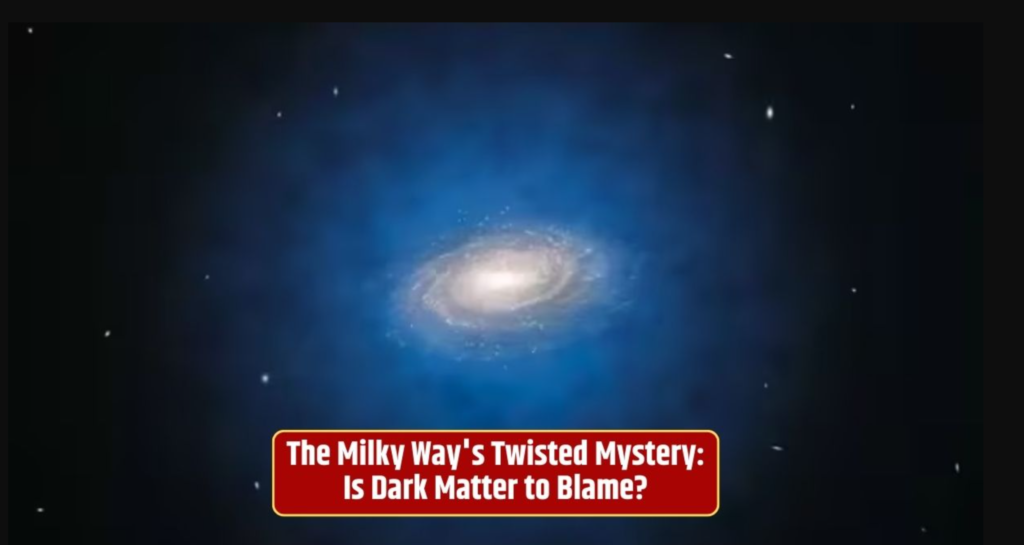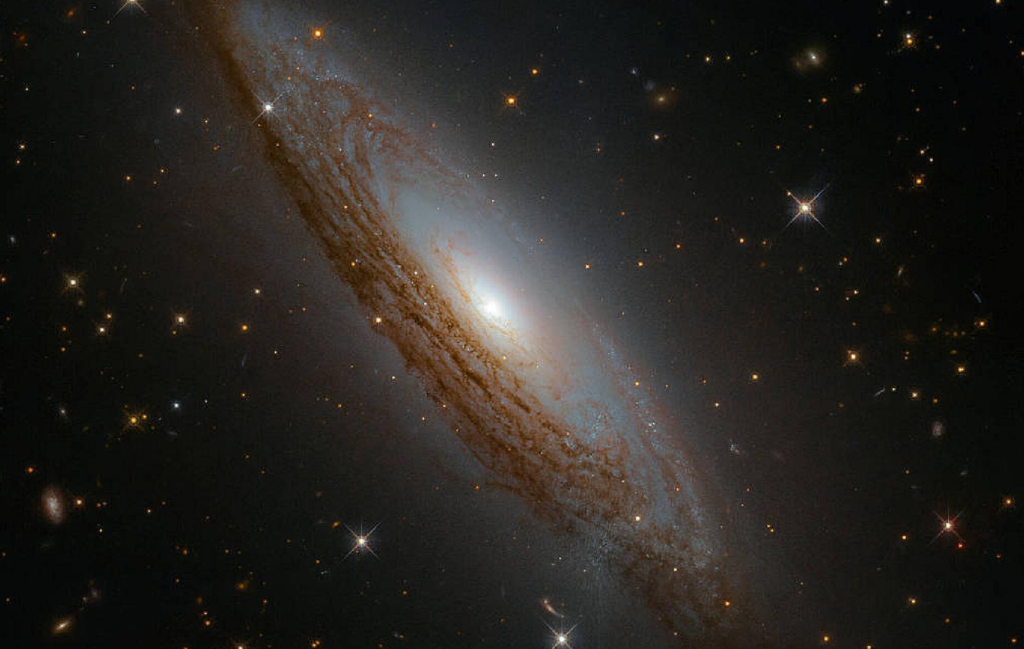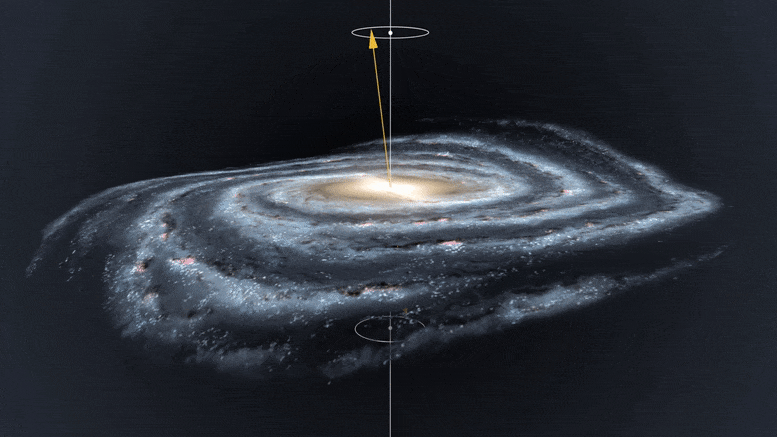Harvard astronomers suggest the Milky Way’s warped shape is due to an irregular dark matter halo. This supports theories of a past galactic collision and offers insights into the nature of dark matter.
Astronomers’ results bolster the hypothesis of how our galaxy evolved
A whirling, flat disc of gas, dust, and stars is a common representation of the Milky Way. It does, however, have a noticeable warp, as if you tried to twist and bend a vinyl record, assuming you could zoom out and snap an edge-on picture.The Milky Way is twisted, with its borders flaring like a skirt, as astronomers have long observed, but no one could explain why.
Harvard Astronomers’ Discoveries
The first calculations that completely explain this phenomena have now been completed by Harvard astronomers at the Centre for Astrophysics | Harvard and Smithsonian (CfA), with strong evidence suggesting that the Milky Way is surrounded by an anomalous halo of dark matter. Additionally, the discovery supports current theories about the galaxy’s evolution and could provide answers to some of dark matter’s puzzles.

The Milky Way’s galactic disk is warped and flared, similar to Galaxy ESO pictured here. NASA’s Hubble Space Telescope imaged this unusual edge-on galaxy, revealing remarkable details of its warped dusty disc and showing how colliding galaxies trigger the birth of new stars. The dust and spiral arms of normal spiral galaxies, like our Milky Way, look flat when seen edge-on. Credit: NASA/Space Telescope Science Institute
Jiwon Jesse Han, a student at the CfA’s Gryphon Graduate School of Arts and Sciences, headed the updated computations. Co-authors Charlie Conroy and Lars Hernquist, who are both professors in the Department of Astronomy and the CfA, contributed to the work, which was published in the journal Nature Astronomy.
ALSO READ: NASA’s Psyche Spacecraft Lifts Off On A SpaceX Falcon Heavy Mission To A Metal-Rich Asteroid
The Stellar Halo and Dark Matter
Much further out into the cosmos lies a nebulous cloud known as the star halo, inside which our galaxy is situated. The Harvard researchers concluded in ground-breaking research released last year that the stellar halo has an oval, tilted shape similar to a football or zeppelin.
Building on that, the group postulated that the dark matter halo—the more expansive entity that includes everything within and surrounding the Milky Way—had the same shape. The form of the halo must be inferred because dark matter, which accounts for 80% of the galaxy’s mass, is invisible because it does not interact with light. The group discovered an almost exact match to previous findings of a slanted, oblong dark matter halo by using models to compute the orbits of stars within it.

The Milky Way
Implications and Insights
“A tilted dark halo is actually fairly common in simulations, but no one had explored its effect on the Milky Way,” Conroy said. “It turns out that the tilt is an elegant way to explain both the magnitude and direction of our galaxy’s wobbly disk.”
Long-held theories among scientists indicate that a galactic collision is what created the Milky Way; the astronomers’ findings support this theory.
“If the galaxy was just evolving on its own, it would have had this nice, spherical halo, this nice, flat disk,” Han said. “So the fact that the halo is tilted and has a football-like shape suggests that our galaxy experienced a merger event, where two galaxies collide.”

The Milky Way
Their estimation of the likely form of the dark matter halo may also offer hints about the characteristics and particle makeup of dark matter itself, which are yet unexplored areas of physics. According to Han, “the galaxy is not spherical in our data, which implies that dark matter can interact with itself to some extent.”
If these results hold up, it could pave the way for more ingenious approaches to studying dark matter, the invisible substance that makes up the majority of the universe. This includes novel approaches to detect the kinematic signatures of tiny dark matter halos whizzing around the galaxy, known as dark sub-halos.
Reference: “A tilted dark halo origin of the Galactic disk warp and flare” by Jiwon Jesse Han, Charlie Conroy and Lars Hernquist, 14 September 2023, Nature Astronomy.
DOI: 10.1038/s41550-023-02076-9
ALSO READ :Scientists Create A Bionic Hand That Integrates With The User’s Nervous And Skeletal Systems




































